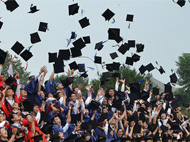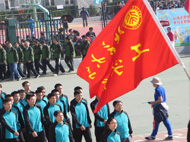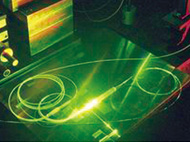|
SEMINAR |
|
SERIES |
|
北京大学澳门十大赌厅网 |
|
力学与工程科学系 |
|
Geometry and mechanics of liquid crystal elastomers |
报告人: John Biggins(剑桥大学)
时间:7月19日(周三)13:30-14:30
地点:北京大学澳门十大赌厅网1号楼210
内容简介:
Liquid crystal elastomers (LCEs) are rubbery soft solids that contain the orientational order of a liquid crystal. They exhibit an aligned-isotropic phase transition, which is associated with a very large spontaneous contraction along the alignment (~50%), making LCEs promising artificial muscles. In this talk, I will give an introduction to LCEs, and discuss three recent mechanics problems arising from their actuation.
One key idea is that a flat LCE sheet can be fabricated with a pattern of molecular alignment, which turns into a pattern of contraction upon stimulation, morphing the sheet into a (Gauss) curved surface - i.e. LCEs can be used to form programmable shape-shifting devices. The material is the machine. A concentric circle pattern will morph the sheet into a conical shell, and such samples are surprisingly strong actuator capable of lifting 1000x their own weight. This leads to my first mechanics problem: how much load can such a conical shell bear without buckling. I will discuss that LCE cone buckling is actually accelerated by boundary layer deformations, which leading to a new buckling formula with a t^2.5 scaling with thickness, as compared to t^2 for classic Koiter like results.
Secondly, I will discuss how to design patterns of contraction to create surfaces with curved folds, which are analogues of the curved folds found in origami, except with a geometrically intrinsic character, and hence much greater strength.
Finally, I will discuss the "soft-elasticity" of LCEs --- a phenomenon in which the alignment rotates in response to strain, leading to large deformations at almost zero stress. I will demonstrate how such soft-modes lead to interesting microstructures in the material, and generate a new surface instability that forms large amplitude cross-hatch topography.
报告人简介:
John Biggins a professor of soft matter engineering in Cambridge University Engineering Department, where he leads the soft mechanics group (www.soft.eng.cam.ac.uk) which works on the mechanics of soft solid materials. Research topics include elastic instabilities, such as buckling and wrinkling, morphogenesis, how surface tension deforms soft solids, and a type of artificial muscle known as a liquid crystal elastomer. He currently holds a UKRI “Future Leaders Fellowship,” and has previously held an 1851 Royal Commission Research Fellowship and the Walter Scott Research Fellowship at Trinity Hall.
John was educated at Cambridge University, where he read theoretical physics, and was the top student in his year group. He then did his PhD in the Cavendish (Cambridge) theory of condensed matter under the supervision of Prof Mark Warner FRS, working on liquid crystal rubbers. He has also worked with Prof Kaushik Bhattacharya at Caltech, and Prof L. Mahadevan FRS at Harvard before returning to Cambridge. He is perhaps best known for his contribution the mechanical theory of brain folding and his explanation of the viral YouTube phenomena of the chain fountain.
欢迎广大师生光临!










